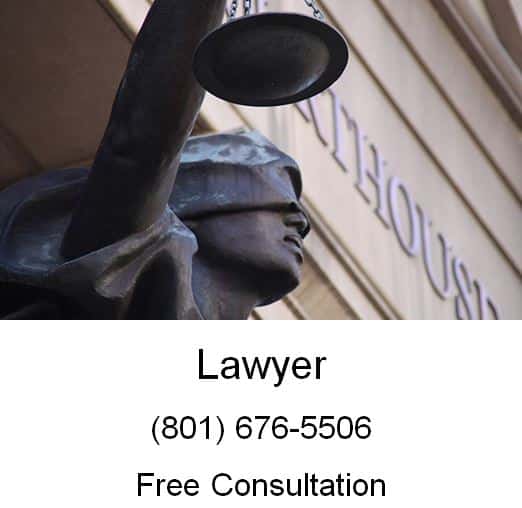
When many people think of the environment, they draw to mind an image of the air, water, and land that surround us outside. However, there is growing attention to identifying and reducing the indoor pollution (whether it’s in the air or elsewhere) of offices and other indoor worksites. The conditions and illnesses collectively referred to as “sick building syndrome” can be caused by impure or hazardous indoor environments. It is often characterized by a lessening of symptoms when the affected individual is not in the building. There are in actuality numerous forms of indoor pollution that can be harmful or sometimes even fatal.
This article lists examples of illnesses and health conditions associated with indoor pollution, potential sources of contamination, and ways to limit employees’ exposure to such contaminants. Call Ascent Law for the Environment Laws and Workplace Safety to learn how we can help you.
The EPA has performed studies that indicate that indoor levels of many pollutants may be two to five times higher than outside levels. The studies have even revealed some instances where indoor levels were more than 100 times higher than outdoor levels. These results are particularly alarming when compared to the fact that the EPA studies also revealed that most Americans spend as much as 90 percent of their time indoors!
Examples Of Building-Related Illnesses & Symptoms
• Legionnaire’s disease
• Asthma
• Hypersensitivity pneumonitis
• Humidifier fever
• Irritated nose, eyes, and throat
• Sneezing
• Blocked sinuses
• Fatigue and lethargy
• Headache
• Dizziness
• Nausea
• Irritability
• Forgetfulness
Potential Sources
• Building maintenance activities
• Pest control
• Housekeeping and cleaning activities
• Renovation and remodeling activities
• New furnishings
• Finishes on furniture or other products
• Occupant/inhabitant activities such as smoking
• Asbestos from insulation
• Formaldehyde from pressed wood products
• Organics and chemicals in carpet fibers and backing
• Restroom air fresheners
• Paints
• Adhesives
• Water-damaged walls, carpets, and furnishings
• Copying machines
• Facsimile machines
• Photography supplies
• Print supplies
Types Of Contaminants
• Biological contaminants: Bacteria, viruses, fungi, molds, dust mites, animal dander, pollen, condensation, and humidity.
• Chemical pollutants: Tobacco smoke, emissions from office equipment, furniture, cleaning and consumer hygiene products, accidental release or spill of chemicals and gases such as carbon monoxide and nitrogen dioxide.
• Particles: Solid or liquid substances light enough to be transferred by air such as dust, dirt, sawdust, drywall chalk, and ink particles from copying machines.
Tips For Preventing Indoor Air Pollution
• Do not close or block air vents, registers, or grilles with furniture, boxes, or other objects.
• Do not smoke in prohibited or enclosed areas (second-hand smoke is a leading trigger of asthma and other respiratory conditions).
• Water and maintain house and office plants.
• Dispose of garbage frequently and properly.
• Store food and other perishables properly.
• Dust and vacuum regularly.
• Be careful with the use of aerosol paint, sprays, and other aerosol products.
• Be careful with the use of home and office-use pesticides such as “bug bombs” and roach sprays. Consider using bait traps for pests, as these will likely not involve the release of as many chemical particles.
• Control humidity and moisture levels indoors.
• Clean air vents and air-conditioning and dehumidifier drip pans or filters regularly.
• Before purchasing new furniture, appliances or other similar items for home or office use ask the seller, supplier, manufacturer, or designer of the product to provide information on any chemical emissions which the product may have.
• Ask if new items such as carpeting or furniture can be aired out in a clean, dry, environment before they are installed or brought into your home and office.
Specific Steps for Reducing Indoor Air Pollution
• Manage the source of indoor pollutants by refraining from use entirely, or controlled timing of the use.
• Isolate the pollutant from inhabitants or occupants of the area.
• Dilute indoor pollutants when used.
• Remove them from the area through the use of ventilation.
• Filtrate in order to clean the air of pollutants that may be left behind after dilution and ventilation.
Environment Lawyer
When you need legal help with environment law in Utah, please call Ascent Law LLC for your free consultation (801) 676-5506. We want to help you.
8833 S. Redwood Road, Suite C
West Jordan, Utah
84088 United States
Telephone: (801) 676-5506
Recent Posts
Foreclosure Lawyer Midway Utah
Child Support And Taxes In Divorce
Strategic Bankruptcy In Foreclosure
{
“@context”: “http://schema.org/”,
“@type”: “Product”,
“name”: “ascentlawfirm”,
“description”: “Ascent Law helps you in divorce, bankruptcy, probate, business or criminal cases in Utah, call 801-676-5506 for a free consultation today. We want to help you.
“,
“brand”: {
“@type”: “Thing”,
“name”: “ascentlawfirm”
},
“aggregateRating”: {
“@type”: “AggregateRating”,
“ratingValue”: “4.9”,
“ratingCount”: “118”
},
“offers”: {
“@type”: “Offer”,
“priceCurrency”: “USD”
}
}
The post Pollution And A Safe Environment first appeared on Michael Anderson.
Source: https://www.ascentlawfirm.com/pollution-and-a-safe-environment/
https://upopety1960.wordpress.com

No comments:
Post a Comment